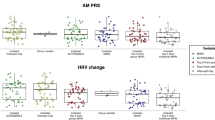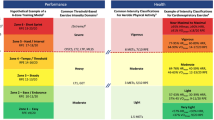Abstract
Given that AI has been develo** quickly in recent years, its usage has become increasingly important. It has had a significant influence on a variety of industries, including sports. Although not many experts are discussing it, the use of AI in sports has become commonplace. Predictive analytics has made it possible for many different kinds of athletic events to produce more precise outcomes and judgements. Making the game more difficult on and off the pitch is one of sports AI's main objectives. As a result, it is critical for sports firms to always stay current. As we analyse this document, our goal is to comprehend and research fresh, cutting-edge ways to apply artificial intelligence (AI) to the world of sports. Elite sports require objective evaluation of an athlete’s performance to enable in-depth quantum photonics research. The shortcomings of manual performance analysis techniques are solved by the application of automatic detection as well as recognition of sport-specific motions. Inertial measurement unit (IMU) and/or computer vision data inputs were used in this work to recognise sport-specific movements. The goal of the study was to conduct a comprehensive evaluation of literature on ML and DL for these purposes. There was a multi-database search done. Included papers must to have examined a sport-specific movement and used machine learning or deep learning techniques to construct a model.



Similar content being viewed by others
Data availability
The experimental data used to support the findings of this study are available from the corresponding author upon request.
References
Alghamdi, W.Y.: A novel deep learning method for predicting athletes’ health using wearable sensors and recurrent neural networks. Decis. Anal. J. 7, 100213 (2023)
Atasoy, B., Mehmet, E.F.E., Tutal, V.: Towards the artificial intelligence Management in sports. Int. J. Sport Exerc. Train. Sci.-IJSETS 7(3), 100–113 (2021)
Bickley, S. J., Chan, H. F., Schmidt, S. L., & Torgler, B.: Quantum-sapiens: The quantum bases for human expertise, knowledge, and problem-solving (Extended version with applications) (No. 2021-14). CREMA Working Paper (2021).
Bullock, G.S., Hughes, T., Arundale, A.H., Ward, P., Collins, G.S., Kluzek, S.: Black box prediction methods in sports medicine deserve a red card for reckless practice: a change of tactics is needed to advance athlete care. Sports Med. 52(8), 1729–1735 (2022)
Chambers-Jones, C.: 11 AI, big data, quantum computing, and financial exclusion. FinTech, Artificial Intelligence and the Law: Regulation and Crime Prevention, 125 ((2021)).
Chmait, N., Westerbeek, H.: Artificial intelligence and machine learning in sport research: An introduction for non-data scientists. Front. Sports Active Living 3, 363 (2021)
Domb, B.G., Ouyang, V.W., Go, C.C., Gornbein, J.A., Shapira, J., Meghpara, M.B., Rosinsky, P.J.: Personalized medicine using predictive analytics: A machine learning-based prognostic model for patients undergoing hip arthroscopy. Am. J. Sports Med. 50(7), 1900–1908 (2022)
Liu, L., Zhang, X.: A focused review on the flexible wearable sensors for sports: from kinematics to physiologies. Micromachines 13(8), 1356 (2022)
Mafu, M., & Senekane, M.: Design and Implementation of Efficient Quantum Support Vector Machine. In 2021 International Conference on Electrical, Computer and Energy Technologies (ICECET) (pp. 1-4). IEEE (2021).
Phatak, A.A., Wieland, F.G., Vempala, K., Volkmar, F., Memmert, D.: Artificial intelligence based body sensor network framework—narrative review: proposing an end-to-end framework using wearable sensors, real-time location systems and artificial intelligence/machine learning algorithms for data collection, data mining and knowledge discovery in sports and healthcare. Sports Med.-Open 7, 1–15 (2021)
Quamara, M.: Quantum computing: a threat for information security or boon to classical computing. Quantum, 1 (2021).
Raj, P., Kumar, A., Dubey, A. K., Bhatia, S., & Manoj S, O. (Eds.). Quantum Computing and Artificial Intelligence: Training Machine and Deep Learning Algorithms on Quantum Computers (2023).
Rajšp, A., Fister, I., Jr.: A systematic literature review of intelligent data analysis methods for smart sport training. Appl. Sci. 10(9), 3013 (2020)
Rodrigues, A.P., Fernandes, R., Bhandary, A., Shenoy, A.C., Shetty, A., Anisha, M.: Real-time Twitter trend analysis using big data analytics and machine learning techniques. Wireless Commun. Mob. Comput. 2021, 1–13 (2021)
Seshadri, D.R., Magliato, S., Voos, J.E., Drummond, C.: Clinical translation of biomedical sensors for sports medicine. J. Med. Eng. Technol. 43(1), 66–81 (2019)
Talebpour, M.: Designing and explaining the Quantum Productivity Model in the Ministry of Sport and Youth of the Islamic Republic of Iran. SPORT TK-Revista EuroAmericana de Ciencias del Deporte, 9 (2020).
Torgler, B.: Big data, artificial intelligence, and quantum computing in sports. 21st Century Sports: How Technologies Will Change Sports in the Digital Age, 153-173 (2020).
Acknowledgements
The authors would like to show sincere thanks to those techniques who have contributed to this research.
Funding
Sichuan Provincial Department of Education's 2021-2023 Higher Education Talent Training Quality and Teaching Reform Project, research on the construction of college students' physical health promotion platform under the concept of health first, project number: JG2021-1093. Chengdu University 2021-2023 talent training quality and teaching reform project, research on the construction of college students' physical health promotion platform under the concept of health first, project number:cdjgb2022019.
Author information
Authors and Affiliations
Contributions
Z.W. Conceived and design the analysis Writing- Original draft preparation. Collecting the Data, X.L. Contributed data and analysis stools. Performed and analysis, L.Q. Wrote the Paper Editing and Figure Design.
Corresponding author
Ethics declarations
Conflicts of interest
The authors declared that they have no conflicts of interest regarding this work.
Consent for publication
All authors reviewed the results, approved the final version of the manuscript and agreed to publish it.
Additional information
Publisher's Note
Springer Nature remains neutral with regard to jurisdictional claims in published maps and institutional affiliations.
Rights and permissions
Springer Nature or its licensor (e.g. a society or other partner) holds exclusive rights to this article under a publishing agreement with the author(s) or other rightsholder(s); author self-archiving of the accepted manuscript version of this article is solely governed by the terms of such publishing agreement and applicable law.
About this article
Cite this article
Wang, Z., Luo, X. & Quan, L. Quantum photonics advancements enhancing health and sports performance. Opt Quant Electron 56, 369 (2024). https://doi.org/10.1007/s11082-023-05917-z
Received:
Accepted:
Published:
DOI: https://doi.org/10.1007/s11082-023-05917-z




